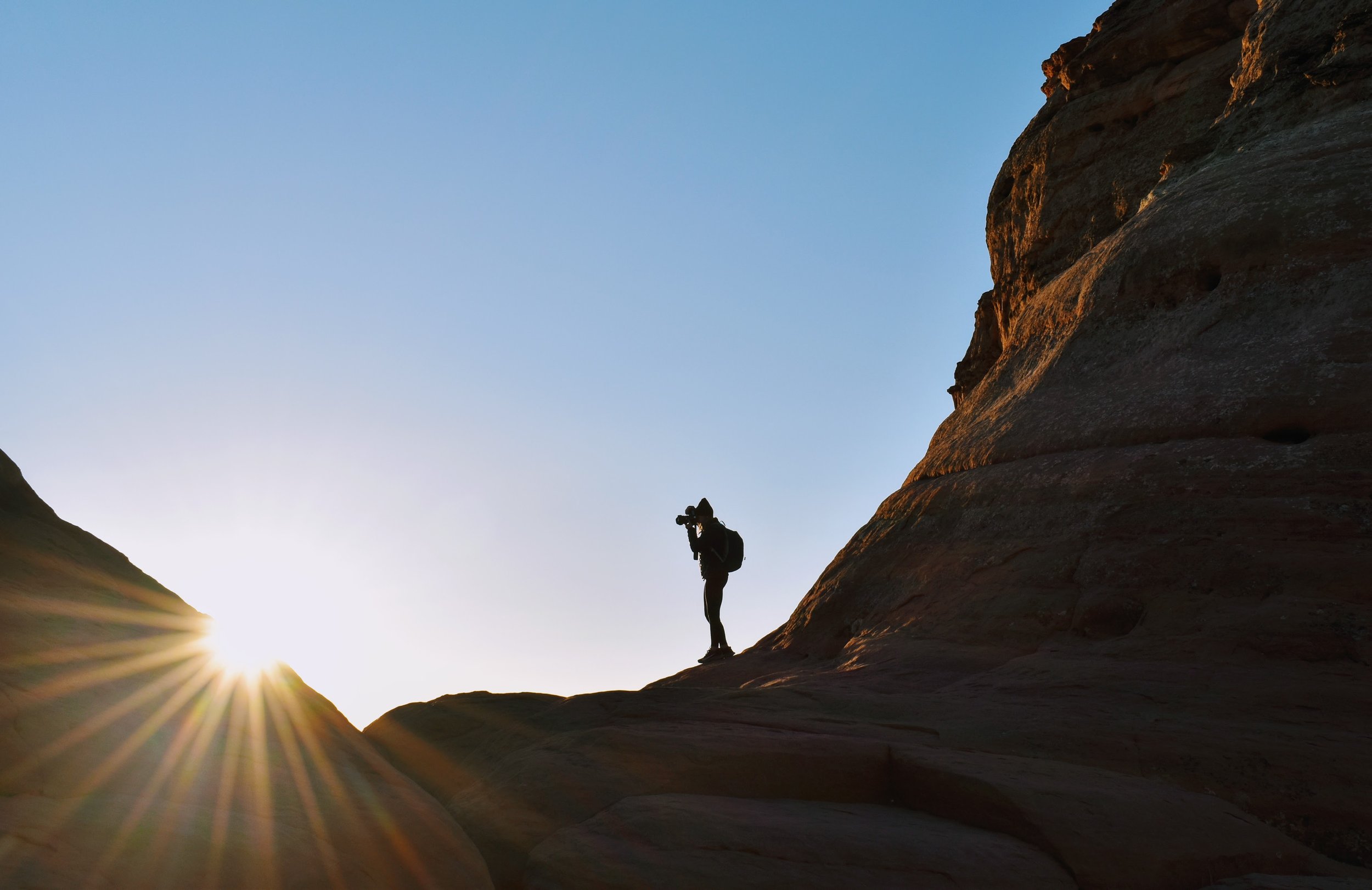Rethinking Shutter Speed: Towards Thoughtful Wilderness Photography
Woman takes picture near Delicate Arch, April 2021.
One morning in April 2021, I hiked to the famous Delicate Arch in Arches National Park. The cold air woke me as I walked along the trail before light, an hour to go before sunrise. A subtle peace enveloped the desert overnight. In the dim light, I saw the frames of a jackrabbit and a pack of mule deer move by soundlessly.
Every few hundred meters, the silhouette of a cairn might stand out from the orange tones of the sandstone backdrop, signaling a turn in the trail.
The hike out to Delicate Arch, April 2021.
When I arrived at Delicate Arch, I was surprised by the crowd that had formed there despite the cold and the time. Dozens of cameras had their eyes trained on the arch, their photographers readying their shots and rubbing hands together to stave off numbness. I wondered: What makes each picture unique? Why are these photographers here to take nearly identical photos? How many people have visited this arch, and how many eyes have seen those pictures?
At that moment, the environmental impact of photography was apparent. It’s something I have been thinking about ever since.
Whether through texts, Instagram stories, Facebook posts or Snapchats, photography has become an increasingly impulsive part of how we interact with nature. As an editor of Drift Magazine and an avid outdoorswoman, I hope to be an advocate of thoughtful recreation in public lands. Taking time to think about what photography does to mediate the connection between the earth and its communities can enrich our time outdoors.
Photography has a history of being associated with the conservation movement, as pictures from the Western US were used to rally public support for the national parks system and turn the national parks into “globally recognized icons.” Ansel Adams, one of the most famous environmental photographers of the twentieth century, imbued pictures of these lands with a sense of American national pride. His photographs halted the swings of millions of axes, protecting forests from Yosemite to Yellowstone from the lumber industry.
Woman takes picture near Delicate Arch, April 2021.
Over half a century later, I couldn’t understand how those photographers were doing the same work of conservation. The flock of picture-takers before Delicate Arch resembled hunters, entering the wilderness with the intention to take something from it. They shot cameras and captured images, asserting visual control over nature’s naked crust.
Looking back to Adams’s work, I see how photography can instead be a tool of environmental grief, a way of remembering a wilderness slowly lost from the destruction of species and habitats from American expansion. Though I worry we have lost the reverence and the majesty pictures of the wilderness used to carry from the proliferation of social media culture, there is always value in the dissemination of natural beauty.
The next time you find yourself in front of Delicate Arch or on the lip of the Grand Canyon, I ask you to spare a moment to think before you raise your iPhone to snag a quick photo.
Photos by Rose Marin



